HISTORY OF UTTARAKHAND
Uttarakhand has many tourist spots due to its location in the Himalayas. There are many ancient temples, forest reserves, national parks, hill stations, and mountain peaks that draw large number of tourists.
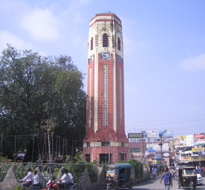
Haridwar
According to Hindu mythology, Haridwar is the place where a few drops of nectar were forgotten by the pitcher when the celestial bird Garuda was taking after the sea churning. Drops of nectar fell on four places and these places are: Ujjain, Haridwar, Nasik and Prayag. Today, these are the places where the Kumbh Mela is held every three years at any one of the four places and Maha Kumbha is held in Allahabad in the 12th year.
Crores pilgrims from all over the world, devotees and tourists gather here to celebrate this festival and bathing on the banks of river Ganga by scripture method. The place where the drops of nectar fell, it is considered as Brahma Kund on har-ki-pauri, which literally means 'the holy feet of God'. Har-ki-pauri is considered to be the most sacred valley of Haridwar, and the whole community of devotees and pilgrims from all over India come here to take a bath on festivals or holy days.
Bathing here is considered necessary to obtain salvation. It is said that Lord Vishnu has left his footprint on a stone which is installed on an upper wall in har-ki-pauri, where the holy Ganges touches them all the time.
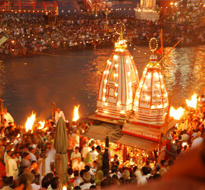
Visible Religious Sites
According to Hindu traditions, five pilgrimages in the Haridwar are Gangadwar (Har-ki-pauri), Kushart (Ghat), Kankhal, Bilwa Teerth (Mansa Devi), Neel Mountain (Chandi Devi).
Har-Ki-Pauri
This sacred pier was built by King Vikramaditya in the memory of his brother Bhrithari in the first century BC. It is believed that Bharathari had come to Haridwar and he had done penance on the banks of the holy Ganges. When he died, his brother built this pier on his name, which later became known as har-ki-pauri. Brahmakund is the most sacred valley of Har-ki- Pauri. In evening time Ganga Devi's aarti to be done on har-ki-pauri is an important experience for any visitor. A sight ceremony of vowels and colors is seen after the pilgrims roam the burning lamps for the peace of their ancestors on the river. Thousands of people from all over the world take care of presenting this prayer at your Haridwar tour. Most of the current valleys were developed during the 1800s.
Chandi Devi Temple - 6 km
This temple is dedicated to Chandi Devi, which is situated on the eastern edge of the river Ganga, on the peak of 'Nil Mountain'. It was built in 1929 by Suchat Singh (King of Kashmir). According to a legend of Skanda Purana, Chand-Munda, who was the general of the monster kings Shundh-Nishumbh, was killed by Goddess Chandi, after which the place was named Chandi Devi. It is believed that the main statue was established by Adi Shankaracharya in the 8th century. The temple is situated at a distance of 3 km from Chandighat and can be reached by a ropeway. Phone 01334- 220324, Time - 8.30am to 6.00pm.
Mansa Devi Temple - 0.5 km
The temple of Mansa Devi, situated on the peak of the mountain of Bilva, in the literal sense, the goddess who fulfills the desire of the mind (Mansa), a popular place for tourists, especially for cable cars, which shows a scenic view of the city. The main temple has two statues, with the first three faces and five arms and the other with eight arms. Phone 01334- 227745.
Maya Devi Mandir - 0.5 km
The 11th century Maya Devi, the ancient temple of God, the god of Haridwar, is considered to be a Sidhpith and it is called the place of falling of the navel and heart of the goddess. This is one of the few ancient temples that are still standing with Narayani Shila and Bhairav Temple.
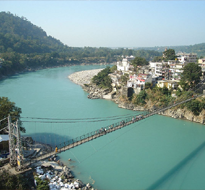
Dehradun
Dehradun was established in 1699. It is said that the Gurus of Sikhs came to Ramraya from Kiratpur Punjab and settled here. The Mughal Emperor Aurangzeb had donated him some villages to Tehri monastery. Here he built a temple similar to that of the Mughal tomb in 1699 AD, which is famous till date.
Perhaps the place of Guru's place in this valley is due to the name of this place Dehradun. Apart from this, according to one of the most ancient legends, the name of Dehradun was earlier in Drona Nagar and it was said that Guru Dronacharya of Pandava-Kauravas had made their ascetics in this place and named them the town after their name.
According to another legend, the Drona drugs of which Hanumanji had taken to Lanka on the strength of Laxman was located in Dehradun, but in the Valmiki Ramayana, this mountain is called Mahoday
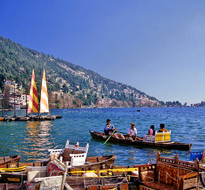
Chandrashila
Chandrashila is summit of the Tungnath . It literally means "Moon Rock". It is located at a height of about 4,000 metres (13,000 ft) above sea level. This peak provides a spectacular view of Himalayas,especially Nandadevi, Trisul, Kedar Peak, Bandarpunch and Chaukhamba peaks.
There are various legends associated with this place. According to one of the popular legend, this is the place where Lord Rama meditated after defeating the demon-king Ravana.Another legend says that moon-god Chandra spent time here in penance.The Beauty of Chandrashila is Incredible.It is an impressive vantage point that offers 360 degrees panoramic views of the mighty Himalayas.This is a beautiful trek, with difficulty level rated as easy to moderate.
Delhi to Chopta – 451 km
Haridwar to Chopta – 225 km
Dehradun to Chopta – 246 km
Mussoorie to Chopta – 212 km
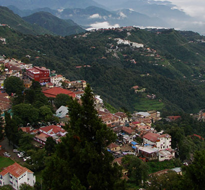
Mussoorie
Located 35 kilometers from Dehradun, Mussoorie is one of those places where people go back and forth frequently. This is one of the major places to go around. This hill station falls in the Shivalik range of the Himalayan ranges, which is also called the queen of the mountains.
In the north-east, the snow-headed peak heads are visually visible, in the south, the Dun valley and the Shivalik range appear. That is why this city looks like a tourist for tourists.History of Mussoorie began in 1825 with the discovery of the current Mussoorie site by Caption Young, an adventure british military officer and resident of Shri. Shor, Dehradun and superintendent.
Colonel Everest built his house here in 1832 and till 1901 the population was 6461, which reached 15000 in the summer season, is also the gateway to Mussoorie Gangotri. Flora and fauna found in Dehradun also increase its appeal.A lot of people grow in abundance in the name of its name, they call it 'Mansoor', the reason for its name, people who still call it Mansuri. This is a popular summer tourism destination for residents of Delhi and Uttar Pradesh.
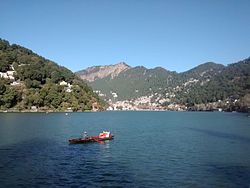
Nanital
Nainital district has special significance in the Kumaon region. Nainital is computed in the major areas of the country. Even today, Nainital has the highest number of rhythm in the district.
This is called Lake District of India, because it is surrounded by lakes everywhere. The word Naini means the eyes and the rhythm means the lake. The city of lakes is a famous tourist destination of Nainital Uttarakhand. This place, surrounded by snowflakes, is surrounded by lakes.
The most prominent of these are Lake Naini, which is named after Nainital. That is why it is also called the city of Jheel. Where to see Nainital, it is very beautiful.
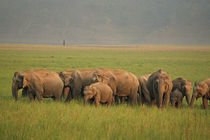
Jim Corbett
Corbett National Park is a paradise for wildlife lovers who want to relax in nature's quiet lap. Earlier this park was known as Ramganga National Park, but in the year 1957 it was named Corbett National Park (Corbett National Park). This park was named after the famous British hunter, naturalist and photographer Jim Corbett.
His famous book 'Man Eaters of Kumaon' describes hunting experiences in Kumaon. The author in the book describes the victim of the tiger, which allegedly killed 400 people, this National Park is situated in the foothills of the vast Himalayas and is known for its green atmosphere. India is famous for the highest population of wild tigers and Jim Corbett Park is home to about 160 tigers. It is situated on the banks of river Ramganga and tourists visit here for exciting tourist spots and adventurous safari.
Corbett National Park Visit Gate & Timing
DHANGADI GATE ( DHIKALA ZONE)
| Date | Corbett National Park Visit timings | Last Entry Dhangari Gate |
|---|---|---|
| 15 Nov to 15 Feb | 06:30 to 17:30 Hrs | 16:00 Hrs |
| 16 Feb to 31 March | 06:00 to 18:00 Hrs | 16:30 Hrs |
| 01 April to 15 May | 05:45 to 19:00 Hrs | 17:30 Hrs |
| 16 May to 15 June | 05:30 to 17:15 Hrs | 17:45 Hrs |
AMDANDA GATE (BIJRANI ZONE)
| Date | Corbett National Park Visit timings | Last Entry Bijrani ( amdanda) gate |
|---|---|---|
| 15 Nov to 15 Feb | 06:30 to 17:30 Hrs | 17:00 Hrs |
| 16 Feb to 31 March | 06:00 to 18:00 Hrs | 17:30 Hrs |
| 01 April to 15 May | 05:45 to 19:00 Hrs | 18:30 Hrs |
| 16 May to 15 June | 05:30 to 17:15 Hrs | 18:45 Hrs |
JHIRNA GATE ( ZHIRNA ZONE)
| Date | Corbett National Park Visit timings | Jhirna Gate |
|---|---|---|
| 15 Nov to 15 Feb | 06:30 to 17:30 Hrs | Open Round the Year |
| 16 Feb to 31 March | 06:00 to 18:00 Hrs | |
| 01 April to 15 May | 05:45 to 19:00 Hrs | |
| 16 May to 15 June | 05:30 to 17:15 Hrs |
DURGA DEVI GATE ( LOHACHAUR ZONE)
| Date | Corbett National Park Visit timings | Last entry Durga Devi Gate |
|---|---|---|
| 15 Nov to 15 Feb | 06:30 to 17:30 Hrs | 16:30 Hrs |
| 16 Feb to 31 March | 06:00 to 18:00 Hrs | 17:00 Hrs |
| 01 April to 15 May | 05:45 to 19:00 Hrs | 18:00 Hrs |
| 16 May to 15 June | 05:30 to 17:15 Hrs | 18:15 Hrs |
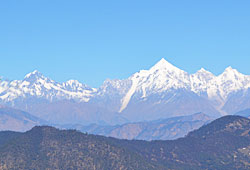
Kausani
It is a very beautiful and quiet tourism center. This place is one of the few places in the country that attracts tourists from around the world due to its beauty. Uttarakhand, known as the 'Land of the Gods', is considered to be the heaven of the earth due to its calm environment, beautiful scenery and beauty.
From here on the snow, the view of the mountain of Nanda Devi is very gorgeous. Situated between Kosi and Gomati rivers, Kausani is called Switzerland of India. The beautiful scenic views, sports and religious places attract tourists.
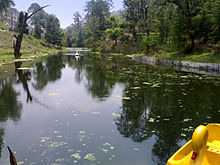
Ranikhet
Ranikhet surrounded by trees of Ranikhet, pine and oak trees is a beautiful and small hill station. The snow-covered Central Himalayan range from this place can be clearly seen. Panditari Glacier, Kausani, Chobatia and Kalika can be reached for a convenient visit to Ranikhet.
The history of Ranikhet is that the Queen of the Katari dynasty, Padmavati, the Queen of King Sudhadev, used to rest on coming to the green fields of this place (Ranikhet) for the summer migration! Queen became overwhelmed with the beauty of this place!
This is why Raja Dharadev has established a castle at this place! This place was named after Ranikhet because of the Queen's stay in the fields.
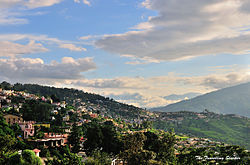
Almora
In Manashkhand of Skandapura, it is said that a holy mountain is situated between Kaushika (Koshi) and Shalmali (Suyal) river. This mountain are not mountain but the mountain of Almora. It is said that Vishnu was the residence of this mountain. Some scholars also believe that Vishnu's kurmavtar was on this mountain. Almora has also been a special contributor to the fight for independence.
Almora has been a special hand in the upliftment of education, art and culture. This town is situated on a hilltop on either side of the hill. From one end of the mountain to the other end is the Lala market. This market is very old and beautifully made from cut stone. In addition, other roads in Almora also remain so good that the tourists roam around them and take real fun of nature.
The beauty of the green forests all around creates a special charm in itself. In Almora, Almora's image becomes visible.
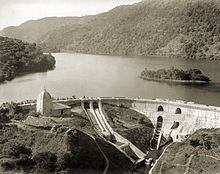
Bhimtal
Bhimtal is a triangular lake. It is about 10 km north of Kathgodam in Uttaranchal. Its length is 1674 meters, width 447 meters depth from 15 to 50 meters. It is also a big draw from Nainital. Like Nainital, it has two corners, the biggest feature of Bhimtal is that it is situated in a beautiful valley adjoining the beautiful valley.
There is an island in the middle of this rhythm, the boat is arranged to reach the island. This island is used as a picnic spot. Most of the tourists go to Nainital to visit the antechamber. After reaching the island, we eat delicious food and boating in the open rhythm. It is also connected to both corners roads.
The distance of Bhimtal from Nainital to 22.5 K Me is. From the north there is a river named Nauli Gadhna, and it gives the river named Gadhera. On this side there are mountain peepal trees. Due to its size, it probably got its name in Bhimtal.
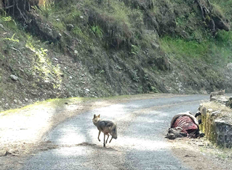
Binsar
Binasar is a word of Garhwali dialect - which means New Prabhat. Excellent view of Almora city, Kumaon hills, and Greater Himalayas are also seen; Leopard is found in Binsar Wildlife Sanctuary, besides Deer and Chital Binsar Mahadev Temple is the main temple of this region. The temple is surrounded by dense pine forests from all sides. The temple of Ganesh, Hargauri and Maheshmardini is installed in the sanctum sanctorum of the temple.
This temple was built by King Pithu in memory of his father Bindu. That is why the temple is also known as Bindeshwar temple. The leopard is found in the Binsar Wildlife Sanctuary. Also deer and chital are easily visible. More than 200 types of birds are found here. Among them monal is the most famous, it is also the state bird of Uttarakhand, but now it appears very little.
A wildlife museum is also located in the sanctuary.Located 19 km from Ranikhet, Binsar Mahadev Temple is located at an altitude of 2480 meters above sea level and is the main temple of this region. The temple is surrounded by dense pine forests from all sides. [2] In the sanctum sanctorum of the temple, the statue of Ganesh, Hargauri and Maheshmardini is established. Nagarilipi, printed on the statue of Maheshmardini, connects the temple with the ninth century.
This temple was built by King Pithu in memory of his father Bindu.That is why the temple is also known as Bindeshwar Temple. Every year in June there is a fair on the occasion of Baikund Chaturdashi. In the fair women give all the night in their hands and worship to receive the children. Famous shrines of Garhwal district, Kamleshwar in Srinagar and at Bisnath Chaturdashi in Thalasin, the maximum number of devotees visit the festival, and celebrate this festival as the main festival of worship and festivity.
